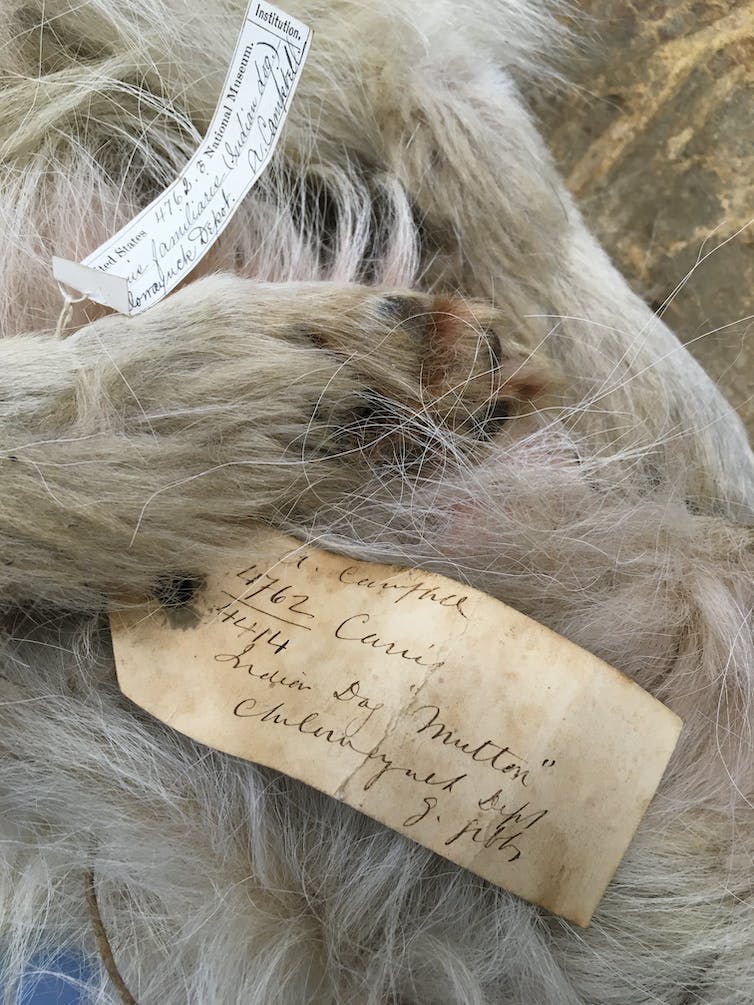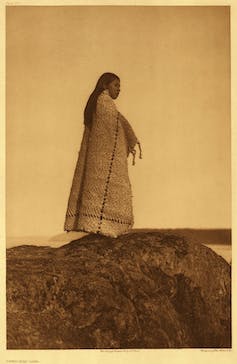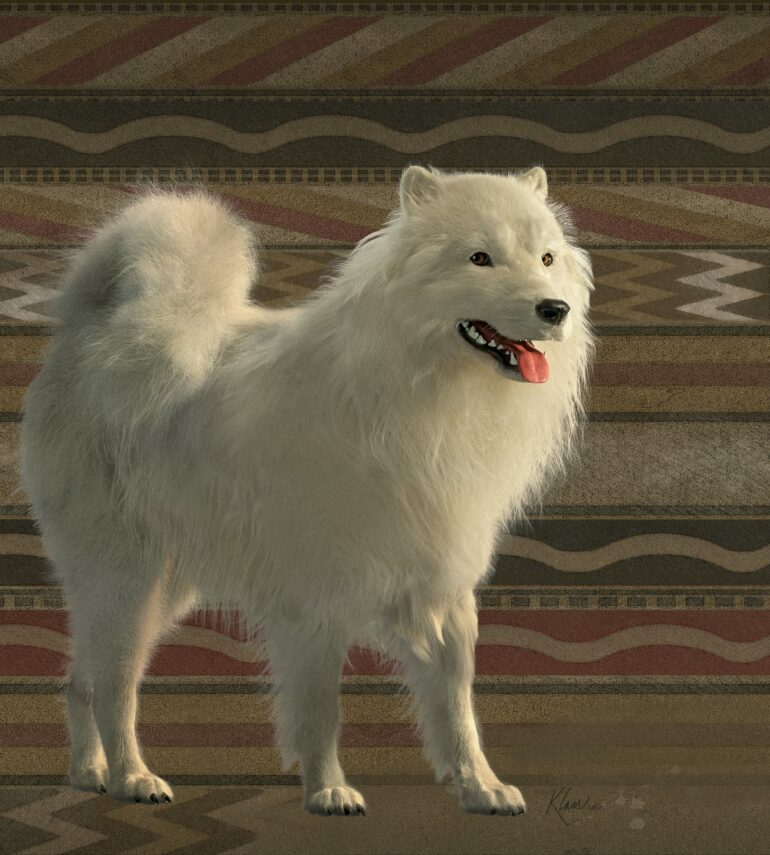Dogs have been in the Americas for more than 10,000 years. They were already domesticated when they came from Eurasia with the first people to reach North America. In the coastal parts of present-day Washington state and southwestern British Columbia, archaeologists have found dog remains dating back as far as about 5,000 years ago.
Dogs performed many different roles in North American Indigenous communities, including transportation, that in other parts of the world were done by multiple other domestic animals.
Prior to the arrival of Europeans, the Indigenous Coast Salish peoples of the Pacific Northwest had traditionally maintained a breed of long-haired dog for the purpose of harvesting their hair, or wool, for textile fibers. Along with alpacas and llamas, these woolly dogs are one of only a few known animals intentionally bred for their fleece in all of the Americas.
But the practice of keeping woolly dogs and weaving textiles made from woolly dog yarn declined throughout the 19th century, and the dogs were considered extinct by the beginning of the 20th century. What had happened to them?

Mutton’s pelt has been preserved at the Smithsonian Institution for more than 160 years.
Audrey Lin
Today, the only confirmed woolly dog specimen is “Mutton,” whose pelt has been housed in the Smithsonian’s collection since his death in 1859. In life, this “Indian dog” was the companion of George Gibbs, a naturalist working on the Northwest Boundary Survey expedition to map out British Columbia and the American Pacific Northwest. In death, Mutton offered the opportunity to learn more about woolly dog ancestry, selection and management.
We are an archaeologist, an evolutionary molecular biologist and a molecular anthropologist who are part of a large research team. It’s important to note that although we collaborated with a number of Indigenous people on our study, the scientists, including the three of us, are not Indigenous. Alongside historical documents and interviews of Coast Salish elders, knowledge keepers, weavers and artists, our team utilized “Two-Eyed Seeing” – viewing the world through the combined strengths of Indigenous knowledge and western science – to bring Mutton’s story and legacy back to life.
A prestigious part of Indigenous culture
Prior to the arrival of Europeans, there were several types of dogs in the Pacific Northwest: larger “village” dogs and hunting dogs and smaller woolly dogs, kept separately to prevent interbreeding. Woolly dogs were a little larger than the modern American Eskimo dog breed and had curled tails, pricked ears and a pointed foxlike face. Instead of barking, they howled.

A young Cowichan woman wearing a woven blanket in the early 1900s.
Edward S. Curtis, ‘The North American Indian,’ 1912/Wikimedia Commons
Traditionally, only high-status Coast Salish women were allowed to keep woolly…



